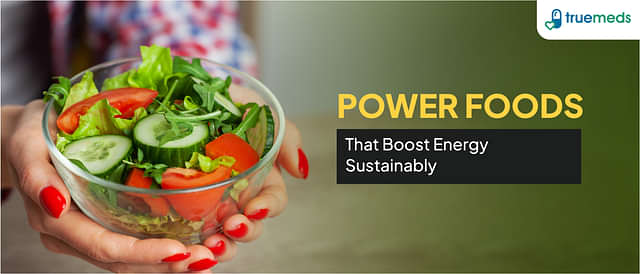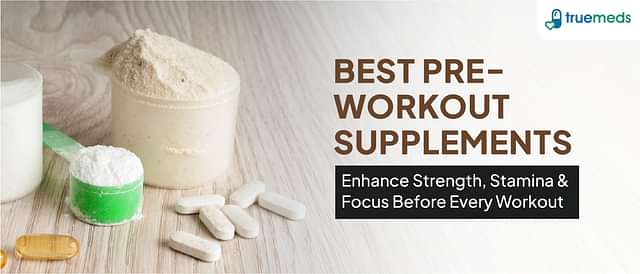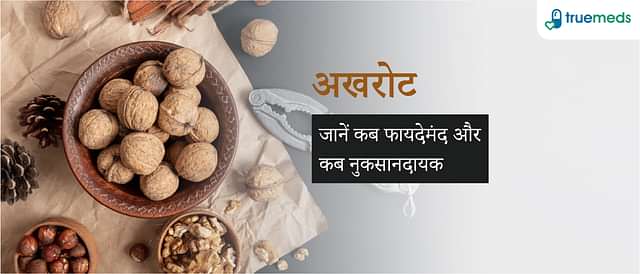Benefits of Papaya/Papita: Nutritional Value and Recipes
Last updated on : 27 Feb, 2025
Read time : 8 min
What is Papaya?
The scientific name for the orange and green fruit known as papaya is Carica papaya. It has a sweet flavour and a smooth texture that many people enjoy. Papayas are a fruit that originated in Central America. They thrive in tropical climates with plenty of rainfall but minimal long-term flooding.
A papaya crop is harmful during freezing temperatures. It was eaten and utilised as medicine by the local indigenous people. Papaya has a distinct flavour that many people enjoy. Ripeness, on the other hand, is critical. Unripe or overripe papayas have a different taste from perfectly ripe papayas.
It should be yellow to orange-red in colour when fully mature, with a few green patches acceptable. Because its flavour is most delicate when served cold, it’s best to keep it refrigerated. It can also be used with other dishes that complement its flavour because of its versatility. Read the health benefits of papaya.
Papaya Nutritional Value
Nutritional Value of 100 gm Papaya
| Nutrients | Concentration |
| Energy | 59 Calories |
| Carbohydrates | 15 gm |
| Fibre | 3 gm |
| Protein | 1 gm |
| Vitamin C | 159% of the recommended daily allowance |
| Vitamin A | 33% of the recommended daily intake |
| Vitamin B9 | 14% of the recommended daily intake |
| Potassium | 11% of the recommended daily intake |
Papayas are also high in carotenoids, which are beneficial antioxidants, particularly lycopene. In addition, papayas absorb these beneficial antioxidants better than other fruits and vegetables.
Papaya benefits
1. Papaya benefits in Cardiovascular Disease Prevention
The antioxidants prevent cholesterol from oxidizing. When cholesterol oxidises, the risk of blockages increases, which can lead to heart disease. The high fibre content of papaya may also help to minimize the risk of heart disease. Folic acid is found in papaya and is help to convert the amino acid homocysteine to less damaging amino acids.
2. Papaya benefits in reducing inflammation and digestion
Papain and chymopapain are two enzymes found in papaya fruit. Some over-the-counter digestive pills contain papain to help with moderate stomach distress. Both papain and chymopapain are anti-inflammatory agents. They may help with acute pain, such as that caused by burns or bruising, and chronic inflammatory disorders such as arthritis and asthma.
3. Support immune system
Vitamin C-rich meals can strengthen the immune system, allowing the body to fight off bacterial and viral infections. Papaya is packed with antioxidants, making it an excellent food for an immune-boosting diet. Vitamin A is another essential vitamin for an efficient and healthy immune system, and papaya is a good source of it.
4. Lower the risk of prostate cancer
Lycopene is a natural pigment present in orange and red foods. Lycopene is found in tomatoes, watermelon, and papaya. Some experts feel that eating more lycopene lowers the risk of prostate cancer. In other trials, however, combining a high-lycopene diet with green tea considerably reduced the incidence of prostate cancer.
The enzyme papain found in papaya can help in digesting protein. It is used to treat constipation and other irritable bowel syndrome symptoms in the tropics (IBS). People who took a papaya-based formula for 40 days had less bloating and constipation, according to one study. The seeds, leaves, and roots have also been shown to aid in the treatment of ulcers in both animals and people.
5. For skin
It can help your skin look more toned and youthful in addition to keeping your body healthy. The wrinkling, sagging, and other skin damages happen to excessive free radical activity. Papaya’s vitamin C and lycopene preserve your skin and may help to decrease the effects of ageing.
6. For Diabetes
Fruit are naturally sweet, and sugar consumption influences blood sugar levels. Some people may believe that fruits should avoid, on the other hand, fruit is an essential element of a balanced diet, and it’s OK to eat it in moderation. According to the United States Department of Agriculture, one cup of fresh papaya contains roughly 11 grams (g) of sugar (USDA). To assist manage weight and keeping blood sugar in the target range, patients with diabetes should limit their intake of added sugars.
A glycaemic index is a number in foods that reflects how quickly they raise blood sugar levels. This can be beneficial for people with diabetes who are striving to maintain a healthy blood sugar level. The glycaemic index of 60, which means it doesn’t spike blood sugar levels too quickly.
Low-GI foods have a score of 20 to 49, moderate-GI foods have 50 to 69, and high-GI foods have a score of 70 to 100. Because of its mild GI, papaya is not just a suitable choice for people with diabetes. Papaya may also help to reduce blood sugar levels. Some reports claim that papaya has a hypoglycaemic effect on the body.
How to Use Papaya?
Using papaya is easy and versatile. You can simply cut it in half, scoop out the seeds, and eat the sweet, juicy flesh with a spoon. Papaya can also be sliced or cubed and added to fruit salads or smoothies for a delicious tropical flavour. For a refreshing treat, blend papaya with yoghurt or coconut milk to make a creamy papaya smoothie. Additionally, papaya can be used in savoury dishes like salsas or salads for a unique twist.
Side Effects of Papaya
While papaya is generally safe to eat, consuming it in excessive amounts or if you’re allergic can cause side effects. Eating too much papaya may lead to digestive issues like diarrhoea or upset stomach, especially if it’s not fully ripe.
Additionally, some people may experience allergic reactions to papaya, which can range from mild itching or swelling to more severe symptoms like difficulty breathing. Pregnant women should also avoid consuming unripe papaya, as it contains latex, which can potentially induce contractions. It’s essential to eat papaya in moderation and to be aware of any allergic reactions or sensitivities.
Simple papaya recipes
Cut it in half and fill each half with Greek yoghurt, blueberries, and chopped nuts for breakfast.
Cut it into strips and wrap a slice of ham or prosciutto around each strip for an appetizer.
Salsa: Finely chop papaya, tomatoes, onions, and cilantro, then stir in lime juice.
Salad: Cube papaya and avocado, toss with diced cooked chicken, and drizzle with olive oil and vinegar.
Dessert: Combine the chopped fruit, 2 tablespoons (28 grams) chia seeds, 1 cup (240 ml) almond milk, and 1/4 teaspoon vanilla extract in a mixing bowl. Combine all ingredients in a large mixing bowl and refrigerate until ready to eat.
Final Thoughts: –
Papaya is a fruit that is highly nutritious and tasty to eat. Its potent antioxidants, such as lycopene, may lower your risk of a variety of ailments, particularly those associated with ageing, such as heart disease and cancer. It may also help your skin stay smooth and youthful by fighting outward symptoms of age.
FAQ’s
Eating papaya every day can be good for you. Papaya is a nutritious fruit with lots of benefits for your body. It’s full of vitamins, minerals, and fibre that can help keep you healthy. Just make sure to eat it as part of a balanced diet, along with other fruits and vegetables.
Papaya does a lot of good things for your body. It’s packed with nutrients like vitamin C, vitamin A, and potassium, which are all important for your health. Eating papaya can help improve digestion, boost your immune system, and even protect against certain diseases. Plus, it’s low in calories and fat, making it a great choice for a healthy snack.
Papaya is often called the healthiest fruit because it’s so nutritious. It’s loaded with vitamins, minerals, and antioxidants that can benefit your body in many ways. Papaya is particularly high in vitamin C, which is important for your immune system and skin health. It also contains enzymes that can aid digestion and help your body absorb nutrients more efficiently.
Both papaya and apples are nutritious fruits that offer different health benefits. Papaya is rich in vitamin C and contains enzymes that aid digestion, while apples are high in fibre and antioxidants. Neither fruit is necessarily “better” than the other—they both have their own unique nutritional profiles and can be part of a healthy diet.
For the all latest coupons and offers on medicines, follow us on Instagram and Facebook
Disclaimer
Our healthcare experts have carefully reviewed and compiled the information presented here to ensure accuracy and trustworthiness. It is important to note that this information serves as a general overview of the topic and is for informational purposes only. It is not intended to diagnose, prevent, or cure any health problem. This page does not establish a doctor-patient relationship, nor does it replace the advice or consultation of a registered medical practitioner. We recommend seeking guidance from your registered medical practitioner for any questions or concerns regarding your medical condition.
Popular Articles
Recommended Articles
Recent Articles
Top-Selling Medicines:
...View more
Top-Selling OTC:
...View more
Company
About UsHealth ArticleHealth StoriesDiseases & Health ConditionsAll MedicinesAll BrandsNeed HelpFAQSubscribe
Registered Office Address
Grievance Officer
Download Truemeds

Contact Us
Our customer representative team is available 7 days a week from 9 am - 9 pm.
v3.7.6
Our Payment Partners



























































